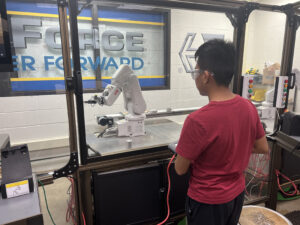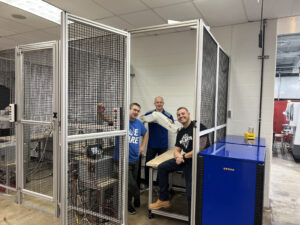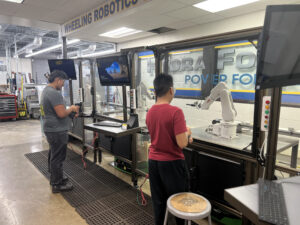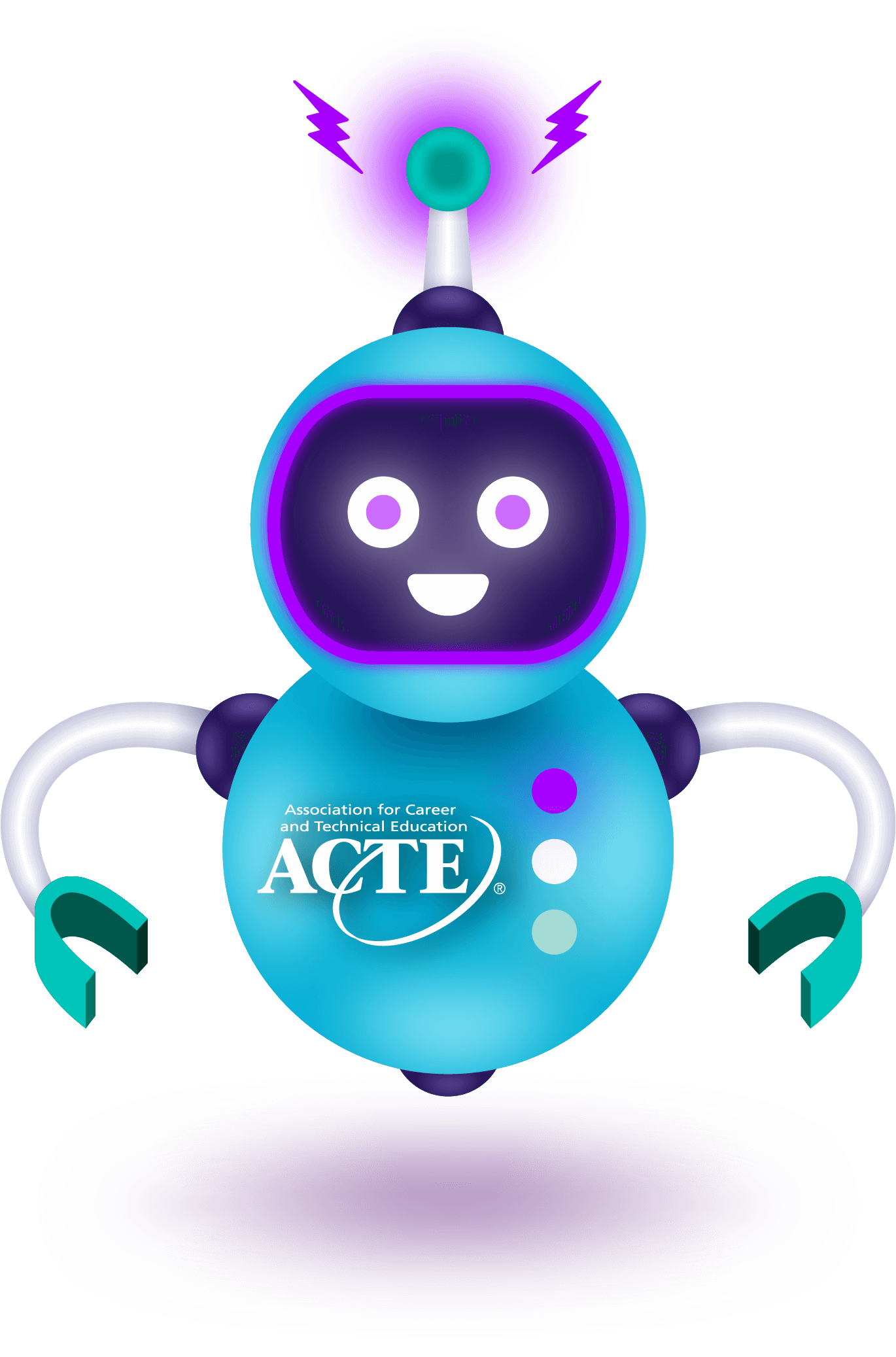 Wheeling High School (WHS) is located in one of the most densely populated industrial regions in the United States. Known as the Golden Corridor, the northwestern suburbs of Chicago, Illinois, are home to businesses of all shapes and sizes, as well as several Fortune 500 company headquarters. Approximately 85,000 people in this region are employed by manufacturing companies. So, in 2008, WHS began teaching a manufacturing curriculum for career and technical education (CTE) students. The program has since grown to include CNC machining, welding, tooling design, 3D printing, laser cutting and, finally, robotics.
Wheeling High School (WHS) is located in one of the most densely populated industrial regions in the United States. Known as the Golden Corridor, the northwestern suburbs of Chicago, Illinois, are home to businesses of all shapes and sizes, as well as several Fortune 500 company headquarters. Approximately 85,000 people in this region are employed by manufacturing companies. So, in 2008, WHS began teaching a manufacturing curriculum for career and technical education (CTE) students. The program has since grown to include CNC machining, welding, tooling design, 3D printing, laser cutting and, finally, robotics.
Onboard robotics education.
Tom Steinbach, Michael Geist and Eric Race, three long-tenured manufacturing instructors at WHS, set up the robotics curriculum and identified a robotics company with which to partner. After reviewing comprehensive education programs from several major manufacturers, the trio chose to work with ABB Robotics. “We were intrigued by ABB because their course materials were complete, but not rigid. This allows us the flexibility to modify the materials as we see fit,” said Steinbach. “Plus, a good number of our local industry colleagues have ABB robots in their plants. So it is a platform that our students may encounter down the road.”
The education package ABB provided to WHS includes four six-axis articulated arm robots, course materials for the teachers and students, and a certification program for teachers and students. It also includes 100 licenses to RobotStudio, an offline simulation programming software, donated by ABB to enhance the learning experience. The course materials help Steinbach, Geist and Race plan lessons that range from the fundamentals to more advanced applications and programming.

Train with simulation technology.
With an average of 28 students per class, sharing hands-on time with only four robot cells, RobotStudio became an integral part of the lab exercises portion of class. RobotStudio allows very realistic simulations to be performed on computers, using real robot programs and configuration files identical to those used in industrial applications. “We don’t have a robot for every student, but we do have a computer for every student,” said Geist. “With RobotStudio, when we issue an assignment, all students are starting from the same spot. They can set up the robot motion offline, learn the geometry concepts and activate the coordinate systems. And when it’s their turn, they can download the program they created to the robot controller and see an actual robot play out their work.”
Establish a strong foundation.
Equipped with the ABB educational materials and the knowledge gained from the ABB faculty certification program, the three instructors continue to adapt the courses to meet the needs of their students. They teach robotics courses to nearly 350 students each year, and some are as young as 14. So there is clearly a wide range of interest and proficiency levels.
“The ABB materials provide a great foundation to establish a core curriculum. But it is also tremendously beneficial to have the ability to branch off and grow a program that best suits our young scholars,” said Steinbach. “We have tweaked a good portion of the PowerPoint materials and lab assignments, adding some elements that are fun and entertaining that allow us to better engage the class. Early in the year, for example, we programmed a robot to dance to music, like a DJ.”

As a result of becoming certified instructors, Steinbach, Geist and Race can certify students that pass the final exam as proficient in the fundamentals of robotic automation. “Getting certified to teach robotics really changed our lives. It taught us how to teach,” said Geist. “Being able to certify our students is a great reward for their hard work. And in some instances, it has changed their lives too.”
Explore careers in robotics.
Some 80% of global educators see automation shaping employment in the next 10 years. But many fewer manufacturing institutes incorporate robotics into their curriculum (ABB, 2022). Barriers include the lack of teachers trained in robotics and automation and the difficulty in incorporating robotics training.
 “Automation is an incredibly valuable tool for manufacturers to be competitive, now and in the future,” said Steinbach. “We have partner meetings twice a year. And many of them need workers skilled in automation and mechatronics. We are going to continue to grow this program because companies really need the people. And our students deserve lucrative careers.
“Automation is an incredibly valuable tool for manufacturers to be competitive, now and in the future,” said Steinbach. “We have partner meetings twice a year. And many of them need workers skilled in automation and mechatronics. We are going to continue to grow this program because companies really need the people. And our students deserve lucrative careers.
“The Next Generation of Engineers program at WHS extends the training to middle school students in our district. They can come to our high school lab some afternoons to do some light programming and jogging of robots.” He continued, “We try to share the science of robotics with them as early as possible.”
Read Techniques to learn more.
link





